How to use the ABS function
What is the ABS function?
The ABS function converts negative numbers to positive numbers, in other words, the ABS function removes the sign and returns the absolute value.
Table of Contents
- Introduction
- Syntax
- Example
- How to convert a negative number to positive numbers and vice versa?
- How to convert all numbers to negative numbers?
- Convert negative numbers to positive and calculate the sum
- Convert negative numbers to positive and calculate the average
- Convert negative numbers to positive and calculate the median
- Function not working
- Get Excel *.xlsx file
1. Introduction
When is it useful to calculate the absolute value?
The absolute value in math is expressed like this: |-12| = 12 The absolute value is denoted by vertical bars on each side of the number. The ABS function lets you calculate the non-negative value.
Here are a few examples when calculating the absolute values are useful:
- The average of absolute deviations from the arithmetic mean, here is the formula:
Average deviation from the arithmetic mean = (1/n) * Σ(i=1 to n) |xi - m(X)|
n - number of values
xi - each value
m(X) - arithmetic mean - The average of the absolute deviations from the median, here is the formula:
Average deviation from the median= (1/n) * Σ(i=1 to n) |xi - m(X)|
n - number of values
xi - each value
m(X) - median - The average of the absolute deviations from the mode, here is the formula:
Average deviation from the mode = (1/n) * Σ(i=1 to n) |xi - m(X)|
n - number of values
xi - each value
m(X) - mode
What is the arithmetic mean? It is the average of a data set.
What is the median? The median is the middle number of a group of numbers.
What is the mode? The most frequent number in a data set.
2. Syntax
ABS(number)
| number | The number you want to remove the sign from. |
3. Example
Calculate the absolute values based on this data set: [56, 24, -20, -23, 52, -70]?
The argument is:
- number - B3 (This is the cell reference to the actual number you want to calculate the absolute value of)
Formula in cell C3:
The number in cell B3 is 56, the ABS function returns 56. The remaining values in cells below B3 are also converted to their absolute values if you copy cell B3 and paste to cells below as far as needed.
The result from cell range B3:B8 is [56, 24, 20, 23, 52, 70]. They are all positive numbers meaning no negative numbers are present.
The ABS function converts a negative number to a positive number, in other words, it removes the sign from a number. Nothing happens to positive numbers.
The ABS function returns #VALUE if you use a text string, however, it returns 1 for boolean value TRUE and 0 (zero) for FALSE.
4. How to convert a negative number to positive numbers and vice versa?
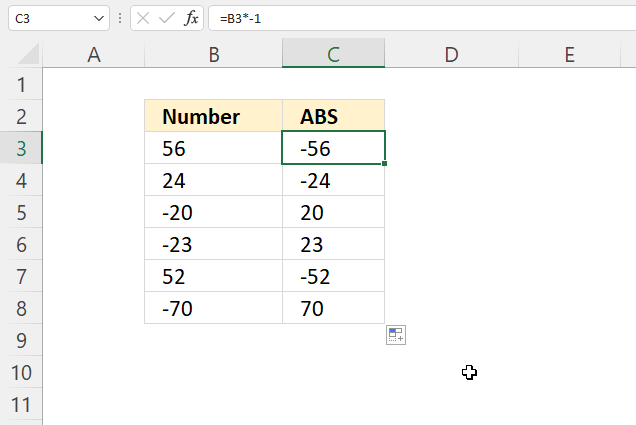
Change the signs based on this data set: [56, 24, -20, -23, 52, -70]?
Formula in cell C3:
The formula in cell C3 performs a sign reversal operation where negative numbers are converted to positive and positive numbers are converted to negative. This is achieved by multiplying the value in the cell reference B3, which in this example is 56, by -1.
The asterisk * symbol in the formula represents multiplication allowing you to multiply values in an Excel formula. While the minus sign (-) typically indicates subtraction, in this particular case, it acts as a sign operator because it immediately follows the multiplication operator *.
Interestingly, when you multiply a negative number by a negative number, the two minus signs effectively cancel each other out, resulting in a positive number. This behavior is the key to the sign reversal operation performed by the formula in cell C3.
The result of the sign reversal operation is [-56, -24, 20, 23, -52, 70]
4.1 Explaining formula
Step 1 - Populate cell reference
B3*-1
returns
56*-1
Step 2 - Evaluate formula
56*-1 equals -56.
5. How to convert all numbers to negative numbers?
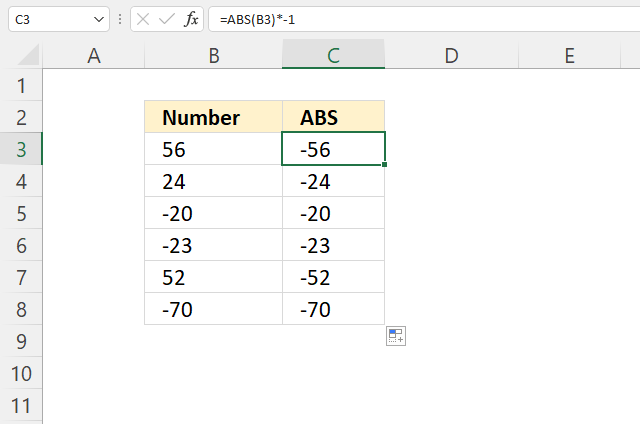
Change the sign for all positive numbers in this data set: [56, 24, -20, -23, 52, -70]?
Formula in cell C3:
The formula in cell C3 converts all numbers to negative numbers. ABS(B3) calculates the absolute value of the number in cell B3. The ABS function returns the positive value of a number, regardless of its original sign. For example, B3 contains 56, ABS(56) returns 56.
The result of `ABS(B3)` is then multiplied by -1 by using the asterisk *-1. For example, 56*-1 returns -56.
When a positive number is multiplied by -1, it becomes negative. For example, 56* -1 = -56.
When a negative number is multiplied by -1, it becomes positive. For example, -56* -1 = -56. However, the ABS function makes sure no negative numbers are evaluated.
Therefore, the overall effect of the formula =ABS(B3)*-1 is to make all numbers negative regardless of the original sign.The result is [-56, -24, -20, -23, -52, -70]
Explaining formula
Step 1 - Calculate the absolute number
ABS(B3)
becomes
ABS(56)
and returns 56.
Step 2 - Multiple with -1
The asterisk lets you multiply numbers in an Excel formula.
ABS(B3)*-1
becomes
56*-1
and returns -56.
6. Convert negative numbers to positive and calculate sum
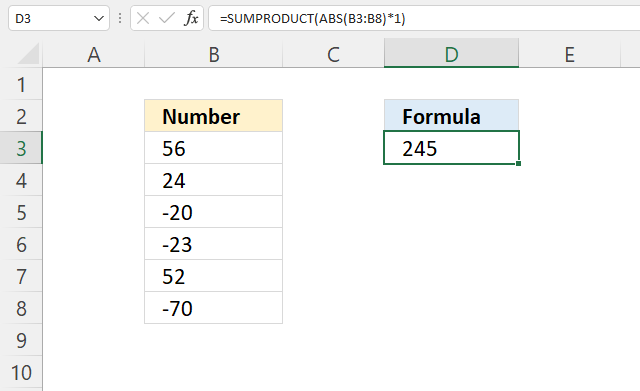
Calculate the total of this data set: [56, 24, -20, -23, 52, -70] However, use only absolute numbers?
ABS function arguments:
B3:B8 - A cell reference to the numbers you want to use. In this case, this is the specified data set described in the question above.
Formula in cell D3:
The formula converts negative numbers to positive and then sums the numbers. 56 + 24 + 20 + 23 + 52 + 70 equals 245. Excel 365 subscribers can use the SUM function instead of the SUMPRODUCT function since array formulas are performed in the same way as regular formulas in Excel 365.
The SUMPRODUCT function multiplies all values by 1 and then calculates a total. The SUMPRODUCT function does not require you to enter the formula as an array formula in earlier Excel versions than Excel 365, that is why it is used instead of the SUM function.
Explaining formula
Excel 365 users can use the following smaller formula:
Step 1 - Convert to absolute numbers
ABS(B3:B8)
becomes
ABS({56; 24; -20; -23; 52; -70})
and returns
{56; 24; 20; 23; 52; 70}.
Step 2 - Add absolute numbers and return a total
The SUM function adds numbers and then returns a total.
SUM(ABS(B3:B8))
becomes
SUM({56; 24; 20; 23; 52; 70})
and returns 245.
7. Convert negative numbers to positive and calculate average
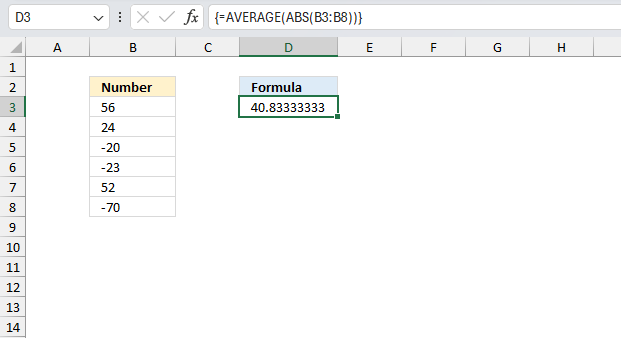
Calculate the average of the absolute numbers in this data set: [56, 24, -20, -23, 52, -70]?
ABS function arguments:
B3:B8 - A cell reference to the numbers you want to use. In this case, this is the specified data set described in the question above.
Array formula in cell D3:
The formula in cell D3 is an array formula, however, Excel 365 users can simply enter the formula as a regular formula. The formula removes the negative signs from the numbers in cell range B3:B8 and then calculates an average.
Here is the formula to calculate the arithmetic mean of absolute values:
Average deviation from the arithmetic mean = (1/n) * Σ(i=1 to n) | xi |
- n - number of values
- xi - each value
The absolute values are [56, 24, 20, 23, 52, 70]. The total is 56 + 24 + 20 + 23 + 52 + 70 equals 245. To calculate the average we need to divide by the number of values which in this example is 6. 245 / 6 equals 40.8333333333333
This value matches the calculated value in cell D3.
7.1 How to enter an array formula
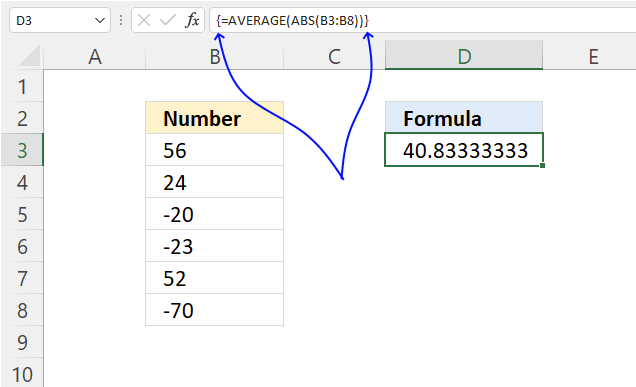
- Copy the array formula above.
- Double press with the left mouse button on cell D3, a prompt appears.
- Paste it to cell C3, shortcut keys are CTRL + v.
- Press and hold CTRL + SHIFT keys simultaneously.
- Press Enter once.
- Release all keys.
The formula bar shows a beginning and ending curly bracket, don't enter these characters yourself.
7.2 Explaining formula
Step 1 - Convert numbers to absolute numbers
ABS(B3:B8)
becomes
ABS({56; 24; -20; -23; 52; -70})
and returns
{56; 24; 20; 23; 52; 70}.
Step 2 - Calculate an average
The AVERAGE function calculates the average of numbers in a cell range.
AVERAGE(number1, [number2], ...)
AVERAGE (ABS(B3:B8))
becomes
AVERAGE ({56; 24; 20; 23; 52; 70})
and returns approx. 40.83333
8. Convert negative numbers to positive and calculate median
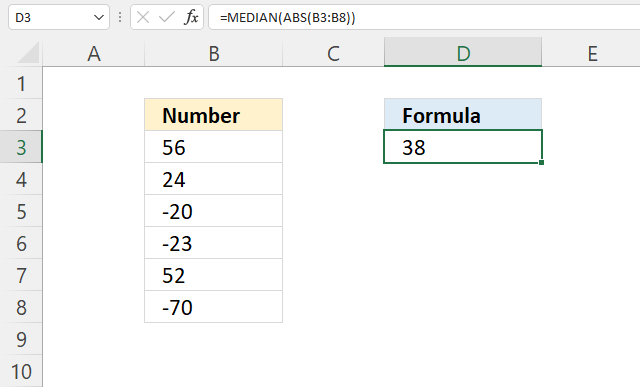
Calculate the median based on absolute numbers in this data set: [56, 24, -20, -23, 52, -70]?
ABS function arguments:
B3:B8 - A cell reference to the numbers you want to use. In this case, this is the specified data set described in the question above.
Array formula in cell D3:
How to enter an array formula. Excel 365 users can ignore the instructions for the array formula creation, it is not needed in Excel 365, simply press Enter after typing the formula.
The median is the middle number of a group of numbers. In this example the group of numbers consists of the absolute numbers in [56, 24, -20, -23, 52, -70]
They are [56, 24, 20, 23, 52, 70] and if we sort them from small to large we get: 20, 23, 24,52, 56, and 70. The middle numbers are 24 and 52, the average of 24 and 52 is 24 + 52 equals 76. 76 / 2 equals 38. The median is 38 which matches the value in cell D3.
Explaining array formula
Step 1 - Convert to absolute numbers
ABS(B3:B8)
becomes
ABS({56; 24; -20; -23; 52; -70})
and returns
{56; 24; 20; 23; 52; 70}.
Step 2 - Calculate median
The MEDIAN function calculates the median based on a group of numbers. The median is the middle number of a group of numbers.
If the group contains an even number of numbers the MEDIAN function calculates the average of the two numbers in the middle.
MEDIAN(ABS(B3:B8))
becomes
MEDIAN({56; 24; 20; 23; 52; 70})
and returns 38. 52 + 24 equals 76. 76 / 2 equals 38.
9. Function not working

The ABS function returns
- #VALUE! error if you use a non-numeric input value.
- #NAME? error if you misspell the function name.
- propagates errors, meaning that if the input contains an error (e.g., #VALUE!, #REF!), the function will return the same error.
9.1 Troubleshooting the error value

When you encounter an error value in a cell a warning symbol appears, displayed in the image above. Press with mouse on it to see a pop-up menu that lets you get more information about the error.
- The first line describes the error if you press with left mouse button on it.
- The second line opens a pane that explains the error in greater detail.
- The third line takes you to the "Evaluate Formula" tool, a dialog box appears allowing you to examine the formula in greater detail.
- This line lets you ignore the error value meaning the warning icon disappears, however, the error is still in the cell.
- The fifth line lets you edit the formula in the Formula bar.
- The sixth line opens the Excel settings so you can adjust the Error Checking Options.
Here are a few of the most common Excel errors you may encounter.
#NULL error - This error occurs most often if you by mistake use a space character in a formula where it shouldn't be. Excel interprets a space character as an intersection operator. If the ranges don't intersect an #NULL error is returned. The #NULL! error occurs when a formula attempts to calculate the intersection of two ranges that do not actually intersect. This can happen when the wrong range operator is used in the formula, or when the intersection operator (represented by a space character) is used between two ranges that do not overlap. To fix this error double check that the ranges referenced in the formula that use the intersection operator actually have cells in common.
#SPILL error - The #SPILL! error occurs only in version Excel 365 and is caused by a dynamic array being to large, meaning there are cells below and/or to the right that are not empty. This prevents the dynamic array formula expanding into new empty cells.
#DIV/0 error - This error happens if you try to divide a number by 0 (zero) or a value that equates to zero which is not possible mathematically.
#VALUE error - The #VALUE error occurs when a formula has a value that is of the wrong data type. Such as text where a number is expected or when dates are evaluated as text.
#REF error - The #REF error happens when a cell reference is invalid. This can happen if a cell is deleted that is referenced by a formula.
#NAME error - The #NAME error happens if you misspelled a function or a named range.
#NUM error - The #NUM error shows up when you try to use invalid numeric values in formulas, like square root of a negative number.
#N/A error - The #N/A error happens when a value is not available for a formula or found in a given cell range, for example in the VLOOKUP or MATCH functions.
#GETTING_DATA error - The #GETTING_DATA error shows while external sources are loading, this can indicate a delay in fetching the data or that the external source is unavailable right now.
9.2 The formula returns an unexpected value

To understand why a formula returns an unexpected value we need to examine the calculations steps in detail. Luckily, Excel has a tool that is really handy in these situations. Here is how to troubleshoot a formula:
- Select the cell containing the formula you want to examine in detail.
- Go to tab “Formulas” on the ribbon.
- Press with left mouse button on "Evaluate Formula" button. A dialog box appears.
The formula appears in a white field inside the dialog box. Underlined expressions are calculations being processed in the next step. The italicized expression is the most recent result. The buttons at the bottom of the dialog box allows you to evaluate the formula in smaller calculations which you control. - Press with left mouse button on the "Evaluate" button located at the bottom of the dialog box to process the underlined expression.
- Repeat pressing the "Evaluate" button until you have seen all calculations step by step. This allows you to examine the formula in greater detail and hopefully find the culprit.
- Press "Close" button to dismiss the dialog box.

There is also another way to debug formulas using the function key F9. F9 is especially useful if you have a feeling that a specific part of the formula is the issue, this makes it faster than the "Evaluate Formula" tool since you don't need to go through all calculations to find the issue.
- Enter Edit mode: Double-press with left mouse button on the cell or press F2 to enter Edit mode for the formula.
- Select part of the formula: Highlight the specific part of the formula you want to evaluate. You can select and evaluate any part of the formula that could work as a standalone formula.
- Press F9: This will calculate and display the result of just that selected portion.
- Evaluate step-by-step: You can select and evaluate different parts of the formula to see intermediate results.
- Check for errors: This allows you to pinpoint which part of a complex formula may be causing an error.
The image above shows cell reference B3 converted to hard-coded value using the F9 key. The ABS function requires numerical values which is not the case in this example. We have found what is wrong with the formula.
Tips!
- View actual values: Selecting a cell reference and pressing F9 will show the actual values in those cells.
- Exit safely: Press Esc to exit Edit mode without changing the formula. Don't press Enter, as that would replace the formula part with the calculated value.
- Full recalculation: Pressing F9 outside of Edit mode will recalculate all formulas in the workbook.
Remember to be careful not to accidentally overwrite parts of your formula when using F9. Always exit with Esc rather than Enter to preserve the original formula. However, if you make a mistake overwriting the formula it is not the end of the world. You can “undo” the action by pressing keyboard shortcut keys CTRL + z or pressing the “Undo” button
9.3 Other errors
Floating-point arithmetic may give inaccurate results in Excel - Article
Floating-point errors are usually very small, often beyond the 15th decimal place, and in most cases don't affect calculations significantly.
Useful resources
ABS function - Microsoft
ABSOLUTE Function in Excel (ABS)
Absolute value - Wikipedia
'ABS' function examples
Table of Contents Count cells containing text from list Count entries based on date and time Count cells with text […]
Excelxor is such a great website for inspiration, I am really impressed by this post Which numbers add up to […]
This article demonstrates how to return the latest date based on a condition using formulas or a Pivot Table. The […]
Functions in 'Math and trigonometry' category
The ABS function function is one of 62 functions in the 'Math and trigonometry' category.
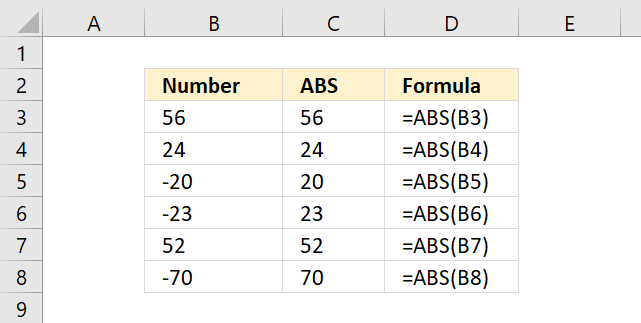
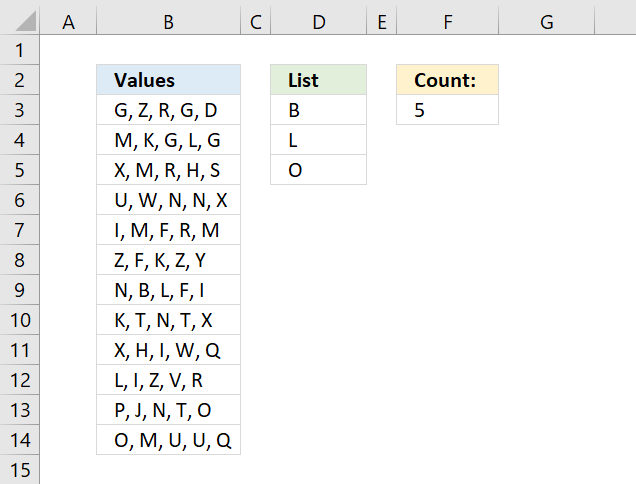
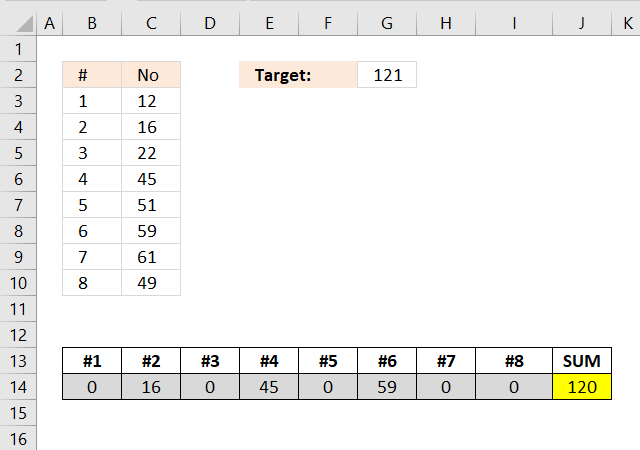
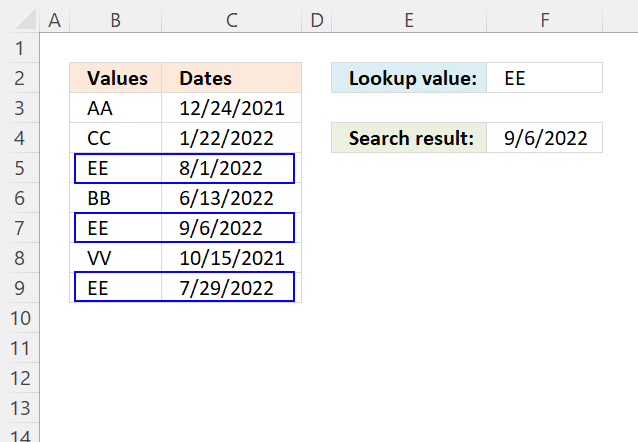
How to comment
How to add a formula to your comment
<code>Insert your formula here.</code>
Convert less than and larger than signs
Use html character entities instead of less than and larger than signs.
< becomes < and > becomes >
How to add VBA code to your comment
[vb 1="vbnet" language=","]
Put your VBA code here.
[/vb]
How to add a picture to your comment:
Upload picture to postimage.org or imgur
Paste image link to your comment.
Contact Oscar
You can contact me through this contact form